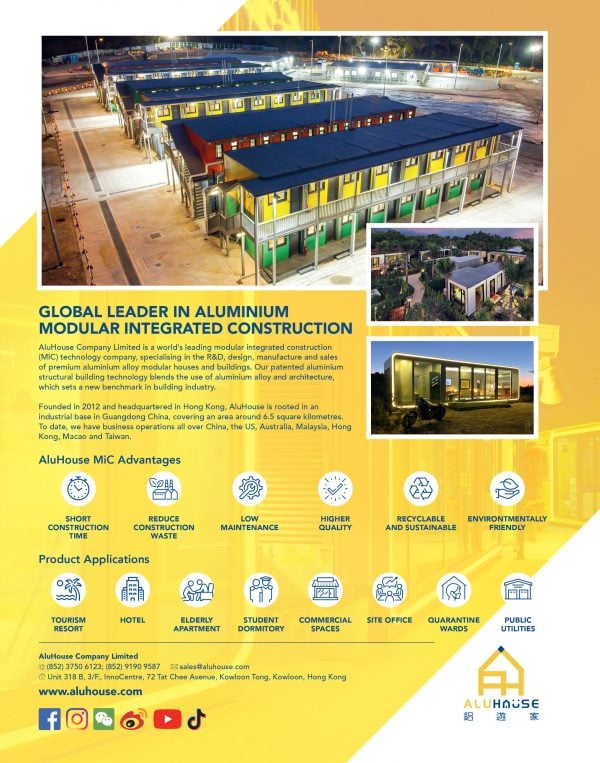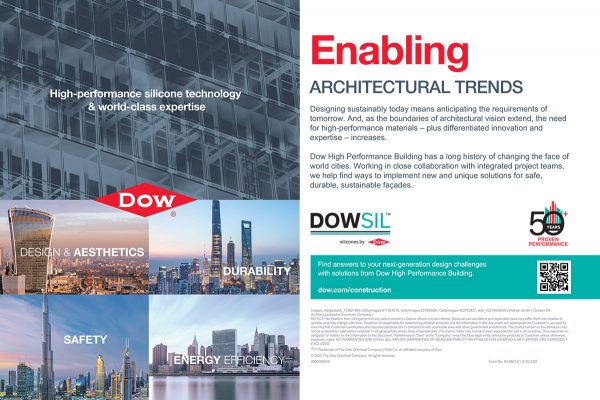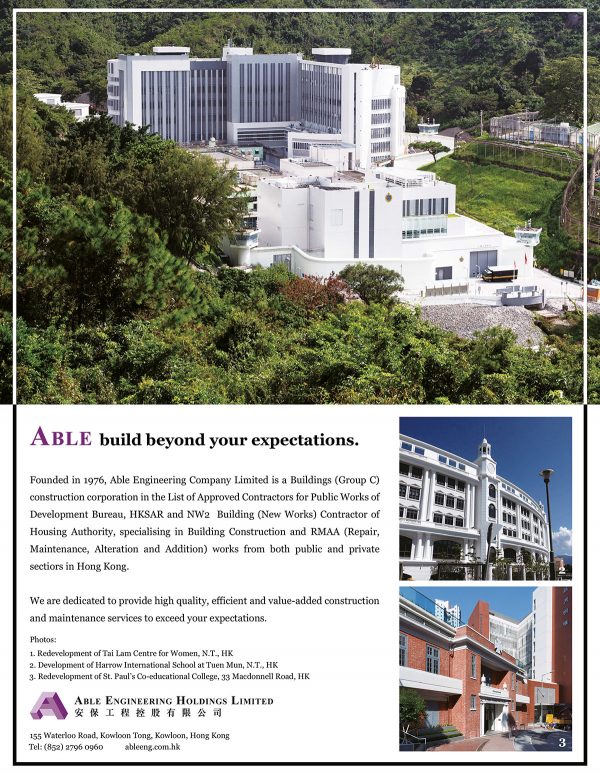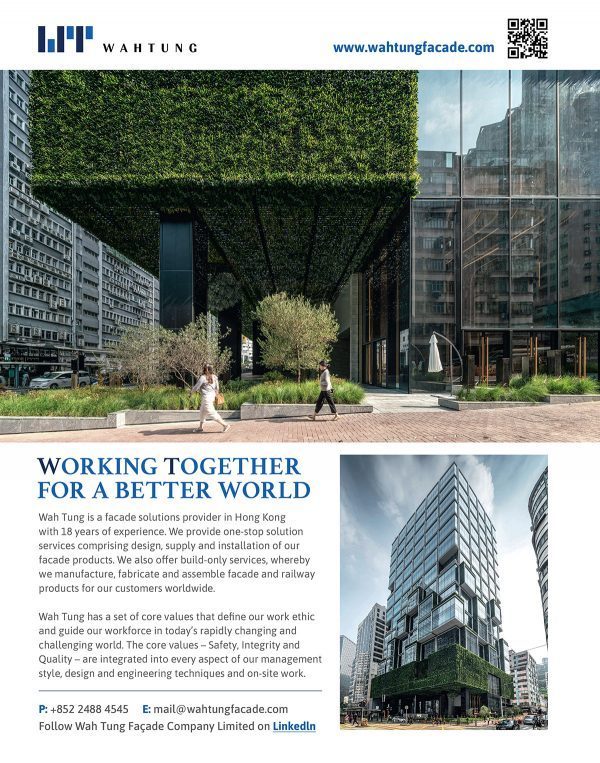Group Directors Janette Chan and Chris Che have each been with P&T Group for more than three decades. That may seem a long time, but the Group itself dates back to 1868, making Janette’s and Chris’s tenures just a small part of that history, though still impressive.
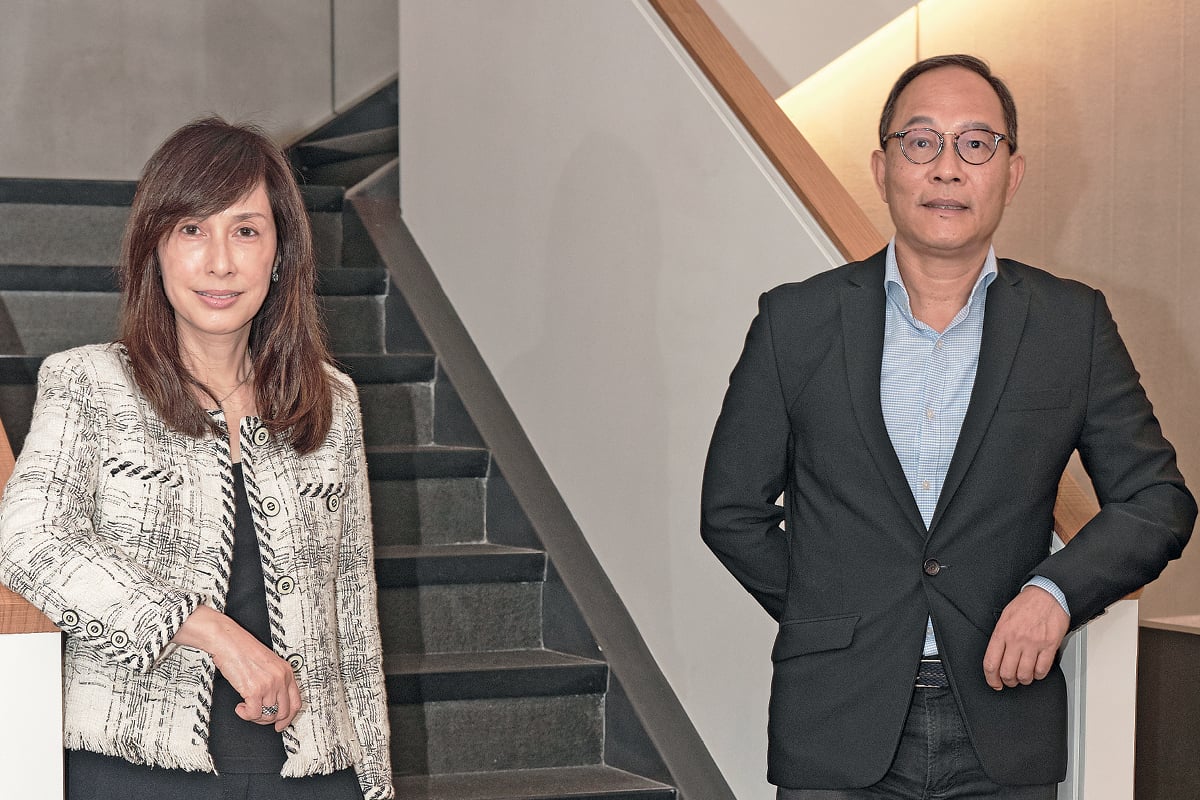
P&T (formerly Palmer and Turner Hong Kong) is a worldwide name in architecture and design, headquartered in Hong Kong since its founder, William Salway, moved there from Australia.
The company has thrived over the past century and a half, a notable feat in a creative industry subject to the twists and turns of fashion. But even with this legacy, the necessity of adapting to an ever-transforming industry has not lessened.
Chris and Janette spoke to The CEO Magazine about the way P&T approaches teamwork, design and the future of architecture.
Every site is unique. We have to face challenges and difficulties each time and new solutions are demanded.
The CEO Magazine: You’ve both been with P&T for more than three decades. What kind of changes has the company undergone during your time?
Janette: I joined P&T 30-plus years ago. The group had only 150 staff, but it’s now expanded to be one of the largest international consultancy firms globally. We now have 12 offices all over the world in China, Singapore, Thailand, the Middle East, Vietnam and Indonesia.
We’re a strong team of more than 1,600 architects, engineers and designers. We carry out projects globally in over 100 cities. So we’ve really expanded enormously in the past 30-something years.
Chris: I’ve been with P&T for 36 years, having started as a junior architectural graduate. For those 36 years, I’ve seen that P&T has more than a century of history, so we have well-established ways of management. However, what worked in the past may not work now.
For example, in the digital age, gen Y likes to stay up late and prefers to start work later. In response to most young professionals’ expectations, we implemented more flexible working hours to suit their needs.
Nowadays, staff also want a better work–life balance, so we have increased the total annual leave days for staff. These are changes we’ve been making to suit the changing times, and the turnover rate has improved.
What do you enjoy about your job? What does an average work day look like for you?
Janette: We’re architects, so we design buildings. We do submissions and contract drawings, and then we supervise the work onsite. We’re quite hands on, on each project, even in our management role. I’m lucky to be working in P&T, because it’s a very international firm with a wide range of projects.
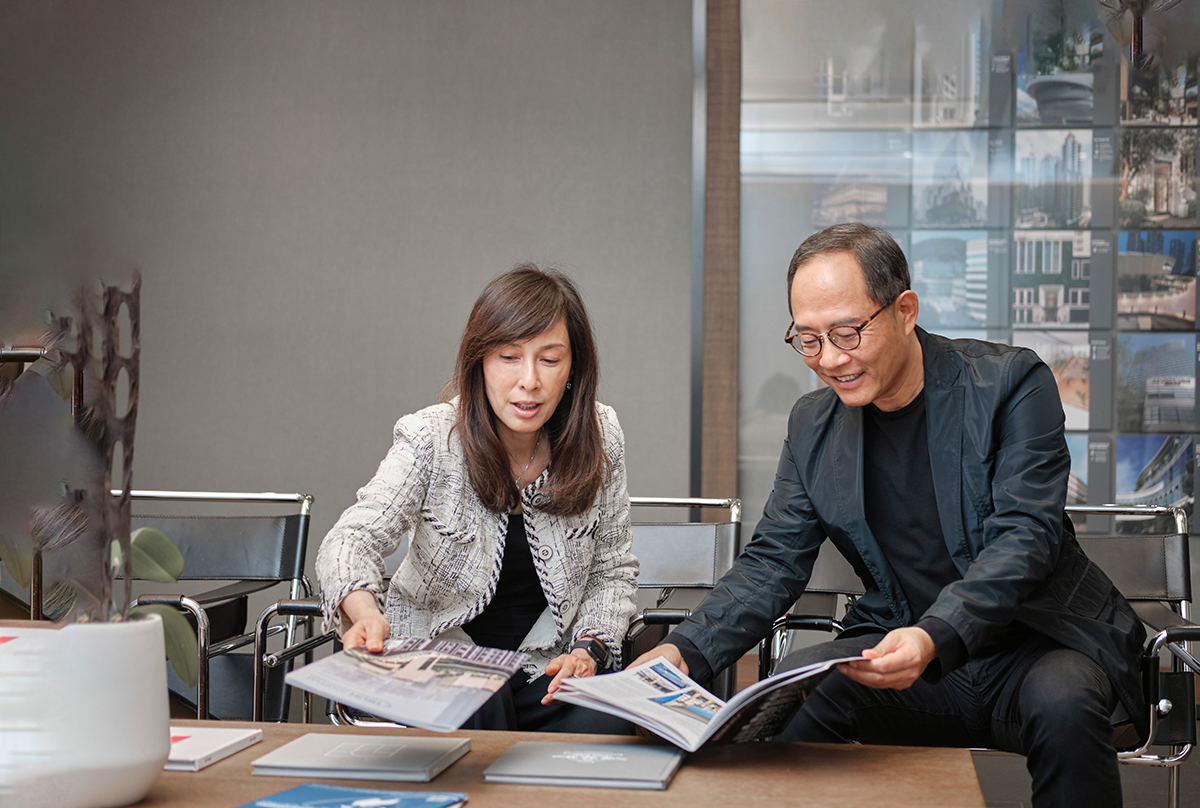
We cover residential, offices, retail, schools, hospitals, elderly homes and sports and community centres. It’s provided me with many opportunities to do different building types at a fast pace.
Hong Kong has the fastest pace in production compared to other parts of the world, providing a lot of opportunities to enrich my portfolio locally and internationally. The career path has been rich and interesting. It’s why I’ve stayed here for 30-plus years.
We make best use of our staff’s talents to provide the best service to a client.
Chris: I’ve had a similar experience. Every site is unique. We have to face challenges and difficulties each time and new solutions are demanded. It keeps our exposure and experience refreshed every day. It also requires high-level skills, coordination and problem solving. The most satisfying thing is that each project is a concerted effort from the whole team.
What kind of demands do clients typically have?
Janette: They look for perfect design across all projects. Everybody is looking for an iconic building, but they also have to be sustainable and suit the client’s requirements. Timely completion of a project is also important.
Chris: And within budget.
Janette: Every client asks for different solutions. Everybody has different aesthetic requirements.
Chris: P&T is unlike most architect practices. We operate as a corporate group, so we have many talented designers. We can offer clients a wide variety of design styles to suit their preferences. We can offer different styles as long as it suits the site and the function of the building, as well as the culture and the environment.
How would you describe P&T’s values and the culture within the company?
Janette: We deliver high-quality, tailor-made, sustainable projects. We serve our clients and society with responsibility, reliability, integrity and with all our hearts too. Every client project is unique, as Chris mentioned. We create the best space to suit the client’s requirements.
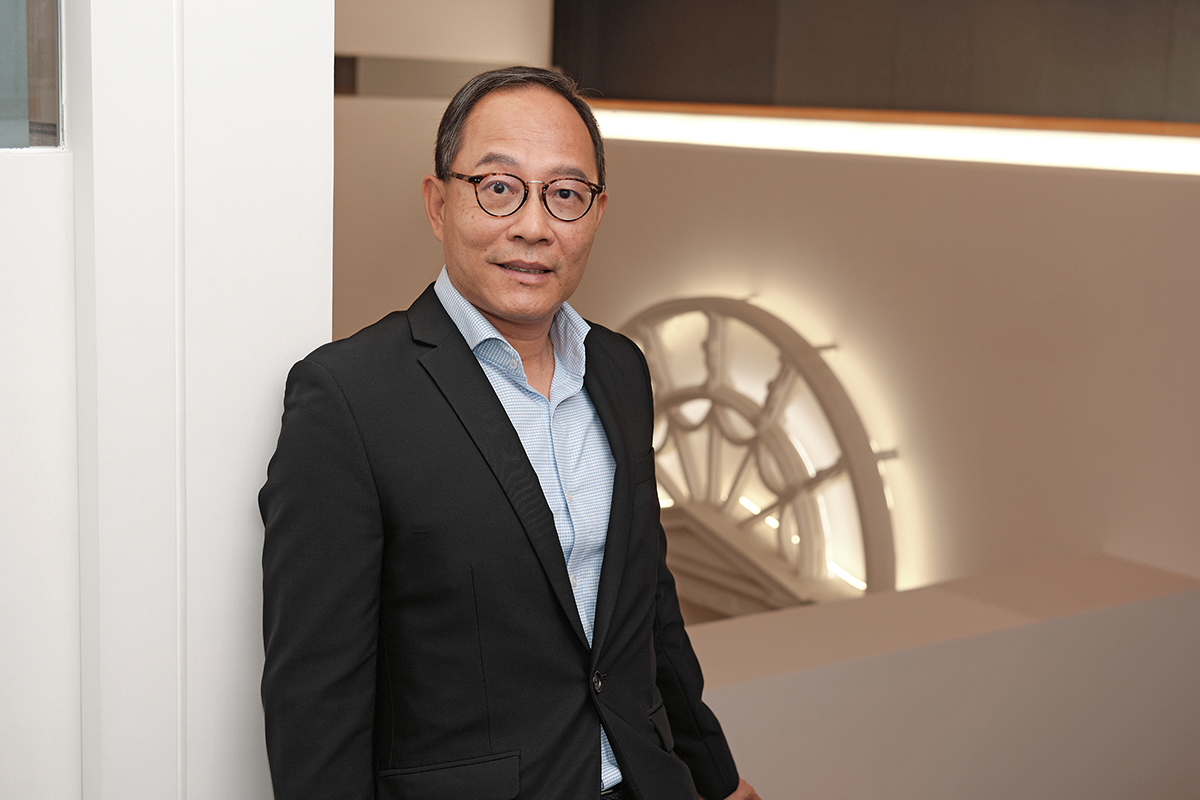
Chris: We have inherent value to perfect every design from the initial concept right down to each design detail. We consider every aspect of the end-user’s need in the daily life to use this building. We consider the buildings not only a place to live and work, but also as a space to enjoy.
Hopefully, we can add a unique legacy to our urban environments. For example, my first job in this company was a housing project. But we weren’t just designing residential units. We also designed the holistic environment and created a lot of community spaces.
We also considered sustainability. We used the excavation soil from the foundations and the water ponds and built a landscape mound at the edge of the site to screen off adjacent traffic noise.
Once the trees had grown, they provided a natural barrier to enclose the cosy, internal landscaped space for the residents to enjoy. All of this is added value to otherwise ordinary residential units.
Your projects are always tailor-made. What’s your strategy for sitting down with a client, understanding what they want and realising that in the final project?
Janette: We sit together with the client and we understand what they want first. Then we look at the site constraints, the environment, constraints in regulations, sustainability requirements and height restrictions. We come up with a few concepts for them to choose.
After they have a direction that they like, then we further develop it into a schematic design, then work with the consultants, and then finally develop it into a final scheme. P&T has a very different approach to other companies in that we provide the best solution for the project.
We use the talent best suited to each project. Some of our architects are good at design and some are good at contract administration and details, so we make best use of our staff’s talents to provide the best service to a client. We’ve done this for many years and I don’t think all firms practise like that, locally or internationally.
What are the challenges and opportunities in the current market?
Janette: The market is very competitive, thanks to globalisation. We’re not just competing with local firms. We’re competing with all firms in the world. Looking at this in a positive way, we also work collaboratively with foreign architects to deliver our service.
Chris: Locally, sometimes the architects criticise the many restrictions to deter variety in design. I see this as a challenge to work under these constraints to achieve a variety of designs. Of course, we also take the opportunity to explore new areas of design and technology.
The real challenge is how to acquire good staff and keep them, let them excel, give them the freedom to do good design. We also need to strengthen our clients’ relationships. We have many projects with repeat clients.
Some of them have been our clients for two or three generations. Because of our committed loyalty and service to the same clients, for one single site, we may have worked on that same site for three redevelopments.
There are many old sites that have been built, designed by us, demolished, redeveloped and then designed by us again. This demonstrates P&T’s ability and our commitment to long-term client relationships.
You mentioned changing technology was one thing that you had to adapt to. What are some examples of the way technology is changing how you do business?
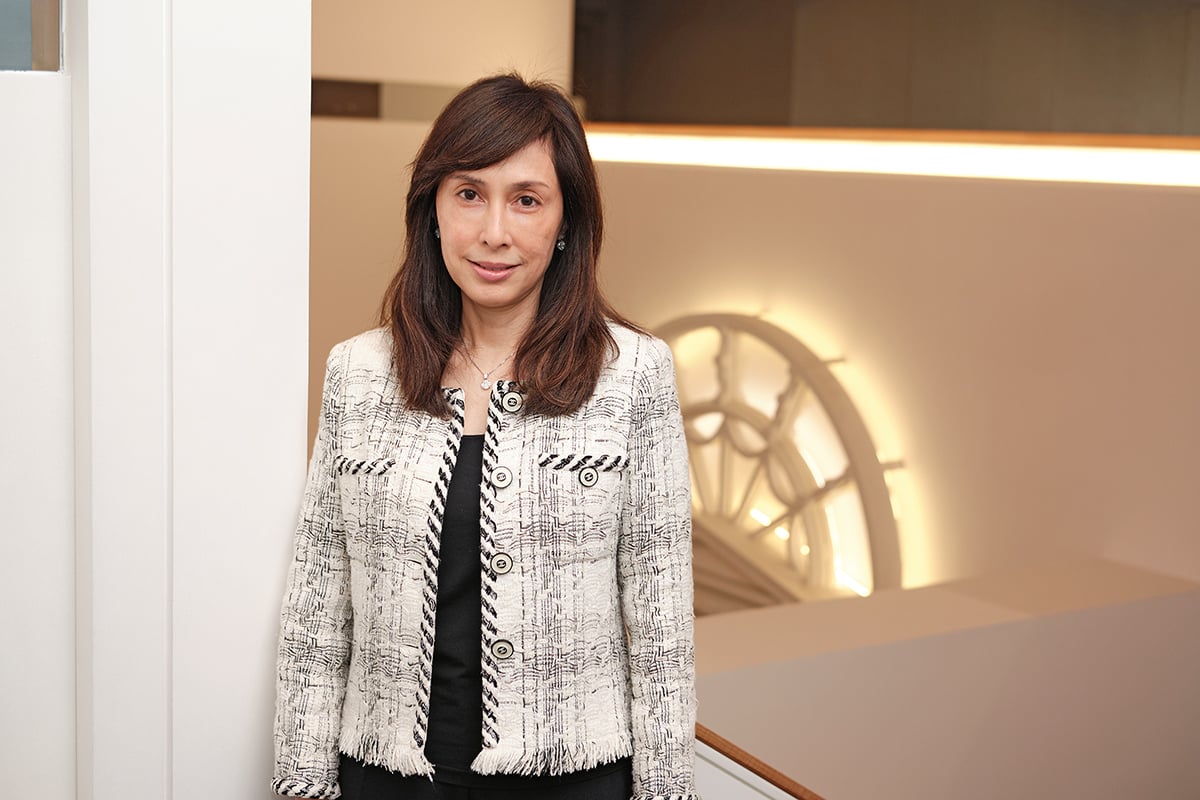
Janette: Another software that we’re using is BIM – building information modelling. Recently the government started to look into the requirements of using BIM but we’re one step ahead. About four years ago we invested our time and software to start using BIM for design and submissions, to equip ourselves for future changes.
Once the government makes BIM a requirement, we can deliver works without any learning curves or loss of efficiency. Another one is MIC – modular integrated construction. Because of the shortage of labour, the government requires a lot of projects to use this construction method.
It’s prefabricated modular units done in a factory, which you just bring into the site and install without in situ concrete work. This was done by our Singapore office more than 10 years ago and they developed a very mature system.
Because of that office’s technology and know-how, our Hong Kong office can start MIC projects quickly and make submissions to the government for approval. The sharing of know-how and technology with regional offices is one of P&T’s strengths.
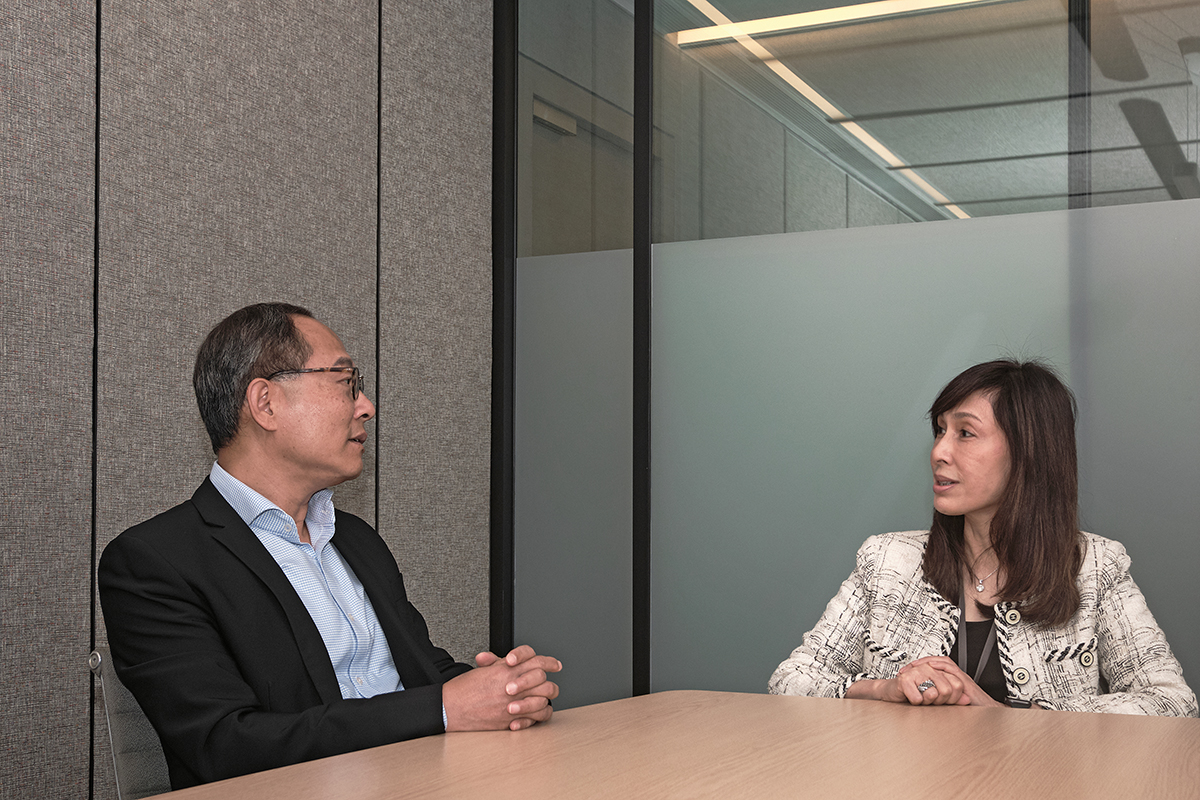
Chris: To elaborate a bit more about MIC – this area of business is well suited to repetitive, modular units like student hostels, residential units, hotels, classrooms and even hotel rooms, hospital wards, elderly residential units.
This is exactly what Hong Kong will need in the coming years due to an ageing population, and demand for residential units in a fast and sustainable way.
The elephant in the room is COVID-19, which has obviously had a massive impact. How have you addressed that crisis and all the economic uncertainty around it?
Janette: We have to be flexible and adaptive to this fastchanging world. We have to think ahead as we did with BIM, and we have to diversify. That is why P&T’s been sustainable for so long, because we do not restrict ourselves to one building type.
We are very diversified so when the market changes, we can be adaptive. We can expand into areas easily. We don’t just stick to local opportunities either. We go where there are opportunities.
The sharing of know-how and technology with regional offices is one of P&T’s strengths.
Recently we established two offices in Vietnam – one in Hanoi, one in Ho Chi Minh City – doing some buildings and other urban planning. Where the opportunities are, we will go. Nowadays, with technology, there is no limit, no boundaries between countries. That will keep us sustainable in these terms.
Chris: When Hong Kong was under a social unrest situation for a few months, some staff had difficulties accessing the office. So we started to invest in remote working technology to enable staff to work from home and continue delivering services to our clients.
It was lucky that we’d invested early in this remote work system. When COVID-19 came, we had two confirmed cases among our staff and the whole office had to be shut down for deep cleaning for two weeks. Fortunately, we had already established a remote working system so we were able to continue our service to our clients and our partners.
We turned COVID-19 from a crisis into an opportunity. After Chinese New Year, we were invited to design a new quarantine centre for the government and to complete the design submission within a few days.
This also overlapped with our office shutdown period so it seemed to be a mission impossible. But we considered it our social responsibility to get it done. Although our staff were working from home, we had a high team spirit. We still managed to mobilise a special team to finish the job from home and then make the submissions on time.
Janette: The crisis has been to our advantage because people know we can be efficient in dealing with this kind of crisis, and our efficiency and productivity don’t drop. We’re always looking at things positively. Our morale has actually been higher during the crisis because everybody’s goal was to fight these difficulties together.
How do you drive passion and enthusiasm among your team?
Janette: We treasure our staff very much. Our staff is our biggest asset, so we treasure them and nourish them and work hand in hand with them as a team. We provide a lot of training and continued education centres, sharing projects and project knowledge between teams.
We have a lot of workshops to help assistant architects to sit for their examinations too. We also give them opportunities. We have rotation systems. Somebody who has been doing residential for a few years will rotate to another team doing maybe schools or institutional projects.
We are very diversified so when the market changes, we can be adaptive.
We offer them a lot of opportunities so that they have a sense of belonging. We care about their emotional health too. We talk to them from time to time and understand their difficulties and give them support.
Chris: I always treasure the importance of training. To pass on our experience from one generation to another is important for the sustainability of the firm. We are in a creative industry. I always say that we need a ‘P’ and a ‘T’ in P&T – passion and talent.
Our company needs talent, but that’s not enough on its own. We also need the passion to offer the best design and quality products. We need a system that allows every individual to perform. We encourage every designer to think out of the box, to create new ideas and to implement them properly in the most practical way.
We have an established and fair succession system. As long as an employee performs, they have the opportunity to be promoted and gradually develop their career in the company. P&T is inherited generation by generation through this succession system. It’s unique in Hong Kong, and in the architectural industry.
What qualities would you say are essential for leadership in P&T group?
Janette: Inspiration and creativity are important, first of all. We need someone who has vision – a vision to build a future. A vision to provide a good urban environment for cities.
So vision is important – creativity and inspiration. Of course, integrity, accountability and resilience are essential qualities too. P&T is big, so collaboration with partners is also essential.
Chris: I think the most important quality is integrity. P&T has been successful for 150 years because of our spirit of integrity. We always choose to be loyal and honest to our clients and partners. We ask our staff to work in an ethical manner and to the highest professional standards.
What do you envisage for the future of P&T Group?
Chris: For P&T, it’s our vision to create P&T as a brand, so that when people look for P&T, they know what they are looking for. It’s a high-quality service with design and detailing to a high standard, and good project management, like other famous, luxurious brands. They are willing to pay a premium for high-quality service.
Is that in terms of building on the services you offer, or trying to better communicate the quality of those services to clients?
Chris: It’s both. We need to improve our services. This will strengthen our brand. But at the same time, we need to promote our image to let the public know that we are offering the best service.
We’ve invested a large amount of resources in promoting our company, promoting our service, and hopefully we can make ourselves a brand that is treasured by the industry.
Proudly supported by:
